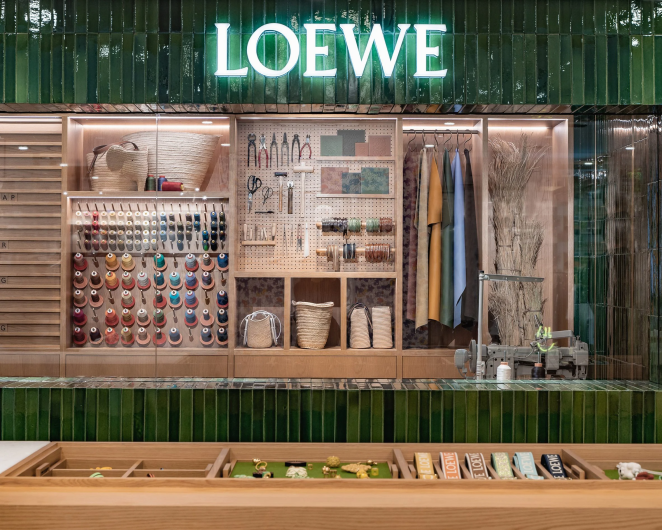The past two years have seen the luxury market expand exponentially, and market predictions suggest that this year will be no different. McKinsey forecasts the luxury goods market to increase by 2-4% in 2024, propelled by digital innovation, expanding customer bases, and soaring demand from U.S and European consumers.
While this is undoubtedly good news for luxury brands, it comes with the risk of market saturation, putting added pressure on brands to stand out from their competitors. This is where brand strategy becomes crucial for prosperity. Let’s take a look at the critical approaches luxury brands should be adopting if they want to distinguish themselves from competitors and spotlight the ones that are killing the game.
1.Maintain a clear visual identity
We live in an increasingly visual age. Therefore, maintaining a brand's visual identity across all products and marketing channels in order to make a mark in a saturated market. From logos, colour palettes, and typography to social media posts and graphic design, a brand's visual identity needs to be cohesive and unique.
Customers, both potential and current, can instantly recognise products and services through consistent and imaginative brand assets. These assets unify a seamless visual style whilst telling a story. Every standout brand is anchored by a captivating brand narrative. While visuals can capture attention, stories have the power to engage people on a deeper level.

Last year, Vogue Business claimed that luxury fashion houses need to redefine their visual signatures to cultivate customer loyalty. Of course, ‘rebrands’ are common across all industries, and a crucial part of having a continually prosperous brand is by staying flexible and evolving alongside changing demographics and trends, like the rise of streetwear or sustainable fashion.
The key to a successful rebrand? Maintaining a brand's core visual identity. This allows you to stay recognisable to loyal customers while generating interest from new ones too. Diesel handled their rebrand brilliantly, revitalising the iconic oval D logo with a bold, grunge aesthetic under the creative direction of Glenn Martens, and garnered a new generation of loyal customers in the process. As a consequence, Diesel has become the hottest luxury brand for Gen Z — a generation with increasing purchase power.
2.Embrace collaboration and endorsements
One lesson all brands can learn from the thriving luxury sector is that well-thought-through collaborations and endorsements can go a long way in distinguishing them from competitors.
As the Director of MA Luxury Business at Sotheby's Institute of Art puts it, "partnerships and endorsements have always been critical to enhancing and bringing to life specific brand traits." This is particularly true in the luxury space, where image and association are paramount. This year’s Met Gala exemplified this point, with Google Trends showcasing interest in designer Thom Browne skyrocketing the day after model Gigi Hadid debuted his custom gown on the Met steps.

To utilise collaborations and endorsements properly, brands must ensure they choose a public figure or partnering brand that aligns with their values and product. Purely profit-motivated partnerships come across as just that to consumers, leaving a bad taste in their mouth and detrimentally affecting brand representation.
Consider the Yeezy x Adidas partnership — this collaboration came to an abrupt end in 2022 due to Kanye West’s antisemitic remarks, leaving Adidas with a massive inventory of Yeezy shoes and a reputational nightmare. While Adidas did eventually end the collaboration, The New York Times reported that they had been “tolerating his misconduct behind the scenes for almost a decade”. This left social media users calling consumers to “boycott Adidas” for staying silent on the matter.
While collaborations can be a crucial marketing strategy for brands wishing to make a mark on the collective consumer consciousness, it can come with tricky implications if done haphazardly.
3.Have strong brand values
This brings us to the third way that brands can stand out — identify their values and, crucially, stick to them. This focus on values is crucial because consumers are increasingly looking for brands that align with their own.
Whether this be diversity, sustainability, accessibility, or even excellence and consistency, potential customers are drawn to brands that demonstrate their commitment to values that align with their own. Stella McCartney gives us a great example of a luxury brand doing this well — the brand has been championing sustainability for years now, releasing detailed yearly impact reports and campaigns featuring products made exclusively using recycled materials.

Stella McCartney’s brand values are clear not just in the copy on their website, but in their products too, making them a natural choice for consumers who prioritise sustainability in their fashion choices.
Where brands can go wrong is committing to values but failing to demonstrate them in their actions, products or services. Take Urban Outfitters, for instance, who were quick to position themselves as allies to the Black Lives Matter movement, only to be quickly called out online for their past missteps, including the appropriation of Navajo culture in their past designs, which resulted in a public lawsuit in 2016.
Consumers do not take well to empty words and performative alignment to social movements, and brands that do this often end up standing out for the wrong reasons.
4.Create memorable experiences for consumers
In recent years, the luxury goods industry has been transformed by the “experience economy”. Consumers have begun to seek experiences that go above and beyond products and services, triggering brands to redefine industry standards.
The most successful luxury brands have carefully thought through each touchpoint their customers will have with their brand, from website UX to in-store service. Some brands are going one step further to stand out from the rest, by putting on events for their customers that align to their mission and enhance the perception of their products and services.

For their 50th anniversary in Japan, Spanish luxury brand Loewe opened ReCraft, a specialised space for their customers' goods to be repaired. This was a win-win for Loewe as it offered above-and-beyond service for their customers while maintaining their position as a brand committed to their sustainability values.
Creating memorable experiences for consumers is a great way for brands to gain publicity and foster customer loyalty, and in an increasingly saturated market offers companies a new way to stand out from competitors.
Final thoughts
Industry saturation is often presented as a negative trend, but as the old saying goes, “competition drives innovation”. In the luxury industry, it has forced brands to be creative with their marketing strategies, resulting in exciting partnerships, experiences, and rebrands for customers.
Ultimately, in order to successfully stand out from the rest, brands need to clearly understand and communicate their visual identity and values. If this sense of identity is woven throughout exceptional products and services, a brand is bound to become distinctive regardless of industry competition.
By Emma James, Design Director at Shoreditch Design





MILANOFILM June 6th, around noon
Great and informative article. Thank you for that!